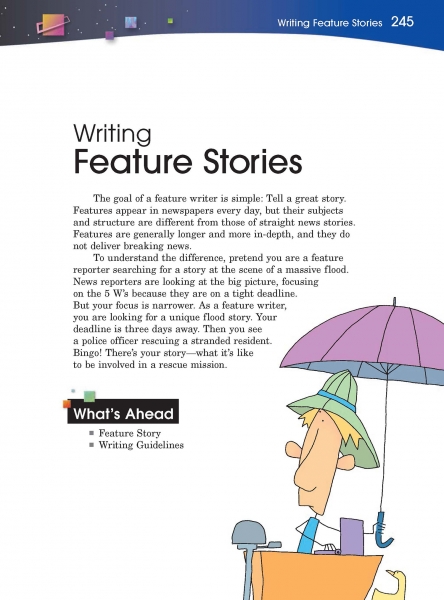Page 245 from

Start-Up Activity
Ask students about their scariest weather-related experience. Were they caught outside in a hailstorm? Or have they seen a flood? Or did they see a tree get struck by lightning? Ask several students to tell their dramatic weather stories.
Then let students know that writing feature stories is about reporting events in a way that is exciting and make the reader want to find out more. Feature stories combine some elements of informational writing with other elements of storytelling.
Think About It
“Everyone is necessarily the hero of his own life story.”
—John Barth

Start-Up Activity
Ask students about their scariest weather-related experience. Were they caught outside in a hailstorm? Or have they seen a flood? Or did they see a tree get struck by lightning? Ask several students to tell their dramatic weather stories.
Then let students know that writing feature stories is about reporting events in a way that is exciting and make the reader want to find out more. Feature stories combine some elements of informational writing with other elements of storytelling.
Think About It
“Everyone is necessarily the hero of his own life story.”
—John Barth